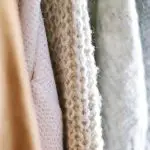So, you've got yourself in a sticky situation with dried slime on your favorite fabric. Don't worry, we've got you covered with 5 effective ways to tackle this mess.
From using vinegar and baking soda to freezing and scraping, these methods will have your fabric looking good as new.
No need to panic or stress about it, we're here to help you master the art of slime removal from fabric. With a few simple steps, you'll be able to say goodbye to that dried slime and hello to a clean fabric once again.
Let's dive in and get that fabric looking pristine!
Key Takeaways
- The vinegar and baking soda method involves spraying the affected area with a vinegar and water solution, sprinkling baking soda, scrubbing gently, rinsing with cold water, and freezing and scraping off the slime.
- Rubbing alcohol can be used to dissolve dried slime by dabbing the affected area with a cloth soaked in rubbing alcohol.
- Soaking the fabric in a warm water and liquid laundry detergent solution can help remove dried slime, followed by thorough rinsing with hot water.
- Using a commercial stain remover that is safe for the fabric and following the instructions can effectively remove dried slime, with gentle brushing and washing afterwards.
Vinegar and Baking Soda Method
To remove dried slime from fabric using the vinegar and baking soda method, start by mixing equal parts of white vinegar and warm water in a spray bottle. Once mixed, generously spray the affected area with the solution.
Next, sprinkle baking soda over the vinegar and water mixture. The combination of the two will cause a foaming reaction, which helps to lift the dried slime from the fabric. Gently scrub the area with a soft-bristled brush or an old toothbrush.
Allow the solution to sit on the fabric for 15-20 minutes to penetrate and loosen the dried slime. Afterward, rinse the fabric with cold water to remove the solution and any remaining slime particles.
Lastly, launder the fabric as usual, and consider adding a fabric softener alternative to the wash cycle. This method isn't only effective in removing dried slime but also serves as one of the homemade stain removers that's gentle on fabric.
With these simple steps, you can restore your fabric to its original, slime-free state.
Freezing and Scraping Technique
You can effectively remove dried slime from fabric using the freezing and scraping technique with the help of a simple household item. Here's how to do it:
- Place the Fabric in the Freezer:
Fold the fabric so that the dried slime is facing outward.
Put the fabric in a resealable plastic bag to prevent it from absorbing any odors from the freezer.
- Scrape Off the Slime:
After a few hours in the freezer, take the fabric out and use a butter knife or credit card to gently scrape off the now-frozen slime. Be careful not to damage the fabric while scraping.
This method is effective because the freezing temperature causes the slime to harden, making it easier to remove. It's a safe and natural alternative to heat treatment or chemical solvents, which may not be suitable for all types of fabric.
Rubbing Alcohol Solution
A rubbing alcohol solution effectively dissolves dried slime from fabric, leaving it clean and residue-free. To use this method, start by testing the rubbing alcohol on a small, inconspicuous area of the fabric to ensure it doesn't cause any damage or discoloration. Once confirmed, lay the fabric on a flat surface and pour a small amount of rubbing alcohol onto a clean cloth.
Gently dab the affected area with the cloth, allowing the alcohol to penetrate the dried slime. As the alcohol dissolves the slime, you may notice it transferring onto the cloth. Continue dabbing and applying more rubbing alcohol as needed until the slime is completely removed. Once the slime is gone, rinse the fabric with cold water and allow it to air dry.
Using a rubbing alcohol solution not only effectively removes dried slime from fabric but also helps in fabric protection and stain prevention. The alcohol acts as a solvent, breaking down the slime without damaging the fabric, and it evaporates quickly, leaving behind a clean and residue-free surface.
Remember to always spot test and avoid using rubbing alcohol on acetate, modacrylic, and acrylic fabrics.
Liquid Laundry Detergent Soak
Soak the fabric in a solution of liquid laundry detergent to help loosen and remove dried slime effectively. Here's how to do it:
- Prepare the Solution:
- Fill a basin or sink with warm water.
- Add a small amount of liquid laundry detergent to the water and mix it until suds form.
- Soaking Process:
- Submerge the fabric in the detergent solution and let it soak for at least 30 minutes. For tougher slime stains, consider soaking for a longer duration.
After the fabric has soaked, you can proceed to the fabric softener method. Add a small amount of fabric softener to the soaking solution and let the fabric soak for an additional 15 minutes.
Once the soaking process is complete, remove the fabric and rinse it thoroughly with hot water. The hot water rinse will help remove any remaining slime residue and detergent from the fabric.
After rinsing, proceed with your regular laundry routine to wash and dry the fabric as usual.
Commercial Stain Remover Application
How effectively can commercial stain removers help lift stubborn dried slime from fabric?
Commercial stain removers can be an effective solution for removing dried slime from fabric. Before applying the stain remover, it's essential to check the label and ensure it's safe for the specific fabric type. First, test the stain remover on a small, inconspicuous area of the fabric to check for any adverse reactions.
Once confirmed, apply the stain remover directly to the dried slime, following the product's instructions. Gently work the stain remover into the fabric using a soft brush or cloth, allowing it to penetrate the slime. After the recommended time, wash the fabric as usual, following the care instructions.
Commercial stain removers are formulated to break down tough stains, making them a convenient option for tackling dried slime on fabric. If the slime stain persists, consider professional cleaning or using a homemade remedy in conjunction with the commercial stain remover for added effectiveness.
Frequently Asked Questions
Can I Use These Methods on Delicate Fabrics Like Silk or Lace?
Yes, you can use these methods on delicate fabrics like silk or lace. When caring for silk, be gentle and use mild solutions. For lace cleaning, avoid harsh scrubbing and opt for gentle, spot-cleaning techniques.
Will These Methods Work on Old, Set-In Slime Stains?
Yes, vinegar is effective for old, set-in slime stains. Use a scrubbing technique to work it into the fabric. Be patient and persistent. This method can help break down the dried slime and make it easier to remove.
Are There Any Potential Risks or Damages to the Fabric From Using These Methods?
When removing dried slime from fabric, there are potential risks of damaging the fabric. Consider the effectiveness of the method and safety considerations to prevent fabric damages. Always test a small area first.
Can I Use These Methods on Colored or Patterned Fabrics Without Fading or Discoloration?
You can safely use these methods on colored or patterned fabrics without fading or discoloration. They're designed for fabric care and color protection, ensuring stain removal and fabric preservation without harming the vibrant hues or patterns.
How Long Do I Need to Wait for the Slime to Freeze Before Attempting the Freezing and Scraping Technique?
Before attempting the freezing and scraping technique, wait at least 30 minutes for the slime to freeze. Once frozen, the best tools to use are a butter knife or credit card. Apply cleaning solutions sparingly.
- Lyocell Allergies: Is This Hypoallergenic Fabric Right for You? - July 14, 2025
- Does Lyocell Fabric Pill? How to Prevent and Fix Pilling - July 14, 2025
- Does Lyocell Breathe? An In-Depth Look at Its Breathability - July 14, 2025







